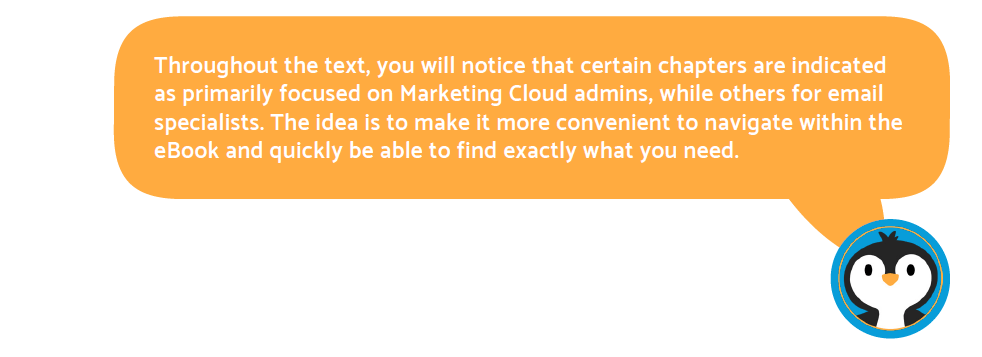We wrote this eBook for all Marketing Cloud users. Whether you’re a data specialist, an email or technical marketer, whether you work in a specific industry, work at an agency or are a consultant, this eBook was written with all relevant audiences in mind and our goal has been to make it as useful to you as possible.
How to read this eBook
The purpose of this book is to serve as a guide for data management in Marketing Cloud. The book is logically divided into sequential sections that unravel the data processes in Salesforce Marketing Cloud (SFMC).
Main subjects covered in this ebook:
- What is a data model?
- Identifying and preparing data for Salesforce Marketing Cloud
- How to define your data model in Salesforce Marketing Cloud
- How to leverage data in the studios and builders of Salesforce Marketing Cloud
- How to manage data in Salesforce Marketing Cloud
We tried to make this as practical as possible and hope you will find it to be a useful tool to add to your Salesforce toolbox. You can use it as a practical handbook; returning to the information you might need at any time.
What is not covered in this eBook?
Our goal is to empower marketers with the knowledge of data management in Marketing Cloud. We deliberately focused on specific areas to keep the book consistent and as practical as possible.
This eBook doesn’t cover certain studios like Audience Studio, Mobile Studio, Advertising Studio, Web Studio, or Interaction Studio. Neither does it cover other Salesforce solutions for data management like Datorama or Customer360. We might cover these in the future. If that interests you, let us know by emailing at [email protected]! Just as we develop DESelect based on the needs of our customers, we align our content strategy with the needs of the Salesforce ‘Ohana’ – you!
If you’d like to learn about other aspects of Marketing Cloud not covered in this eBook, you can subscribe to our newsletter here and be the first to learn about SFMC best practices.

What is a data model?

Diving straight in, a data model is a framework that organizes the elemental relationships within a database, standardizing their relationship with one another and the properties of real-world entities. For instance, a data model may specify that a data element representing a house should comprise several other elements, which represent the building materials, the number of rooms, as well as defining its inhabitant.
On the one hand, the term ‘data model’ (DB) can refer to the formalization of objects and relationships found in a particular application domain: For example, the customers, products, and order information held by an organization. At other times it refers to the set of concepts used in defining such formalizations: For example, concepts such as entities, attributes, relations, or tables. This eBook uses the term in both senses.
Which databases are used within Salesforce Marketing Cloud?
Relational databases aim to represent the world in a logical way
One such database is a relational database — a digital database founded on the relational model of data.
Normalization is the process of organizing data. This includes the creation of tables and then establishing relationships between them, according to rules designed to protect the data while making the database more flexible. This eliminates redundancy and inconsistent dependency.
The normalized data model is used in the data designer function of Contact Builder, which we cover in more detail in a later chapter. Keep reading and we’ll get to that 🙂
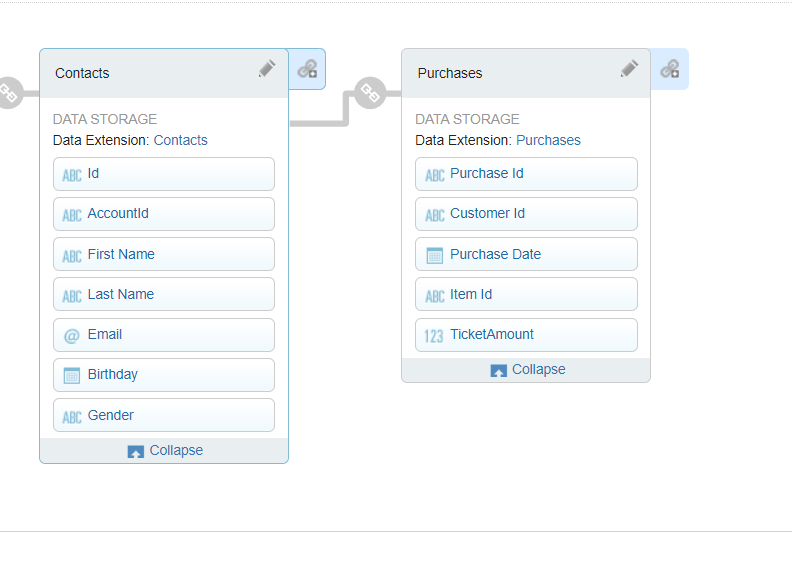
(Normalized data model in Marketing Cloud.)
Flat-file databases represent the world in a more practical way
However, it’s also possible to denormalize data, by designing your data model using as few objects as possible, so you can read data with simple queries and fewer joins between tables. Essentially, when you denormalize data you get flat-files DBs.
With a flat-file database, records follow a uniform format, and there are no structures for indexing or recognizing relationships between these records. The file is simple. A flat-file can be plain text or a CSV. Relationships can be inferred from the data, but the database format does not make those relationships explicit.
An example of a flat-file data model would be a data extension in Salesforce Marketing Cloud.
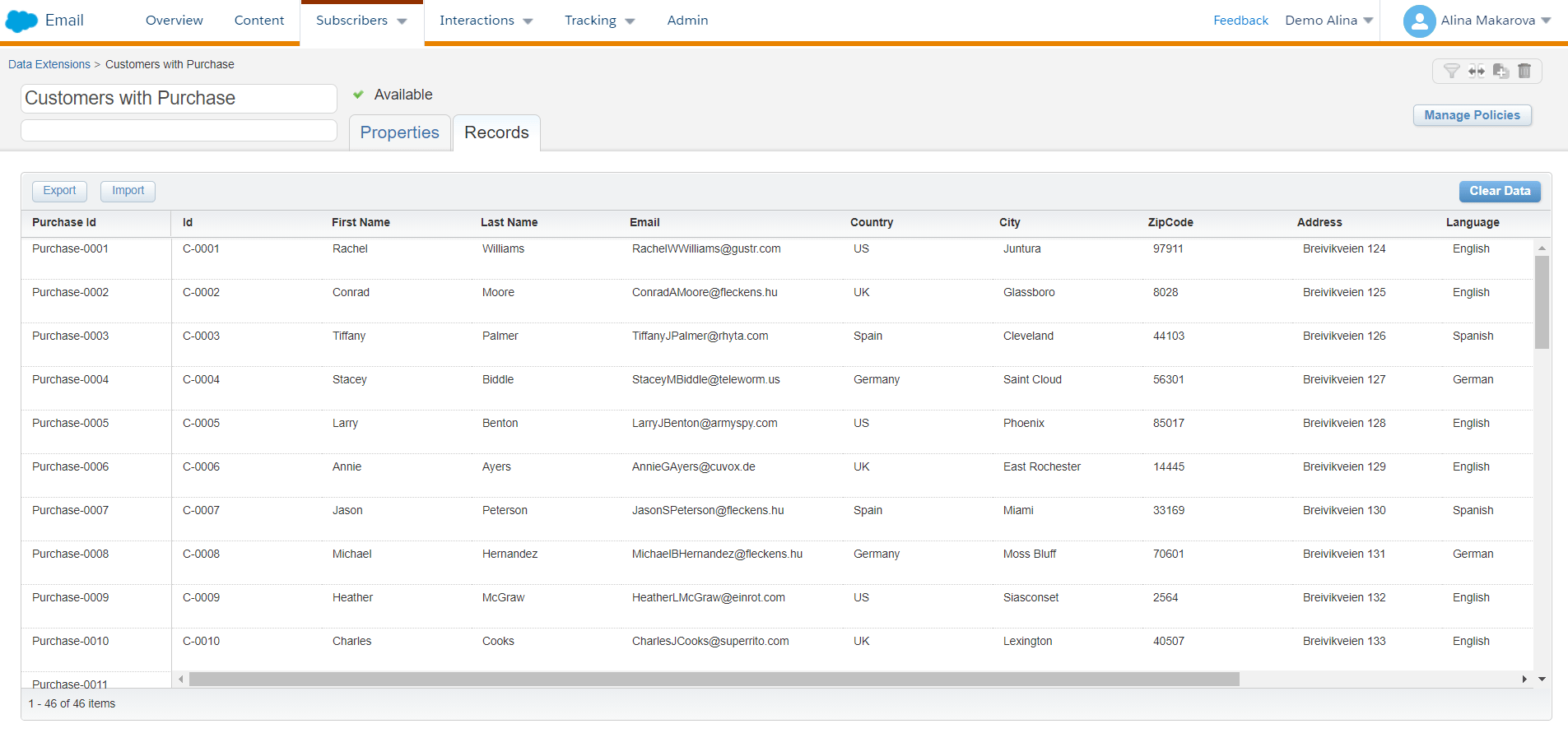
(Example of a flat-file data model.)
For better visualization of different data models, we decided to add some industry-specific models, specifically from the education, retail, and insurance industries:
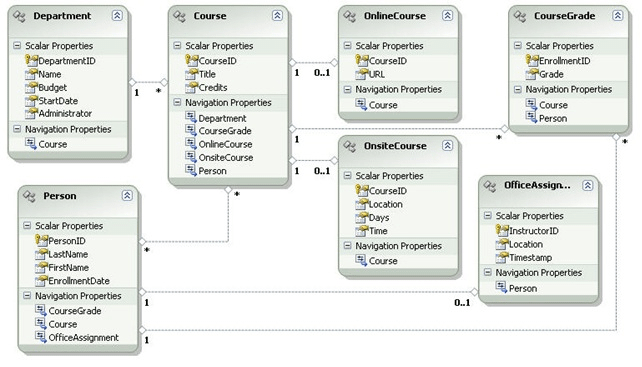
(Normalized data model for the education industry. Source: HESA.)
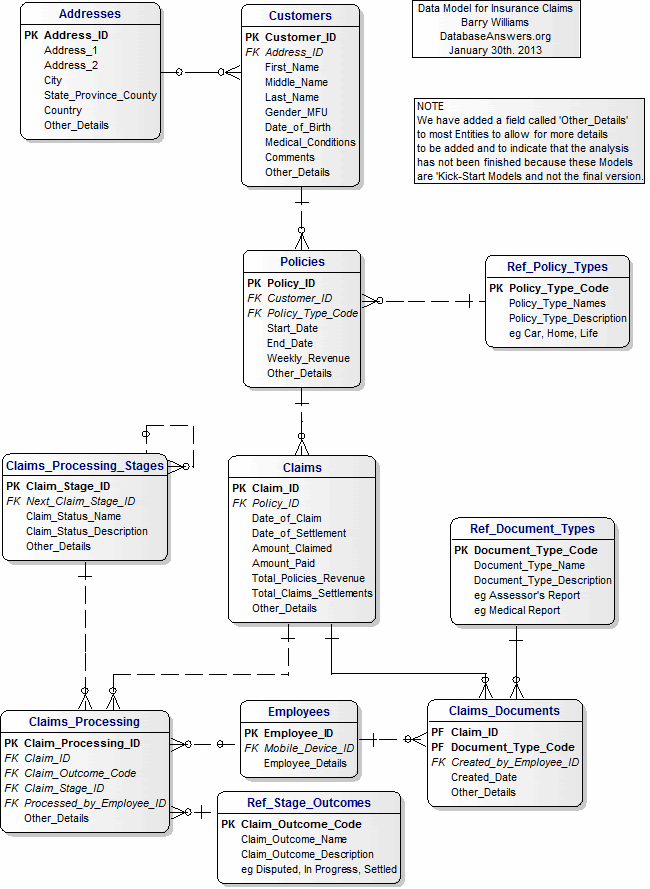
(Normalized data model in the insurance industry. Source.)
These tables might be familiar to some Salesforce users, as the Salesforce CRM uses a normalized data model like the one below:
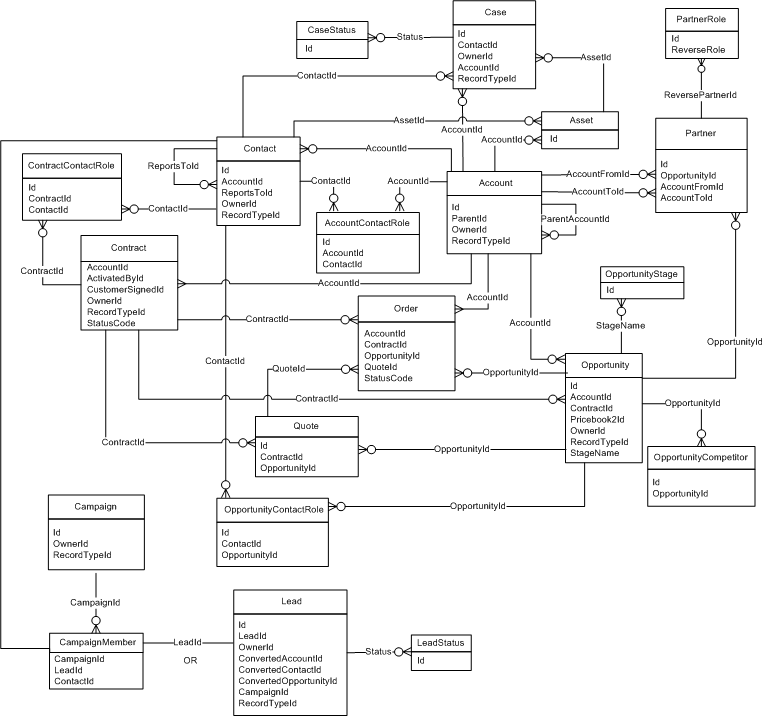
(Salesforce CRM normalized data model. Source.)
However, when you start to manipulate the data in relational data models in Marketing Cloud (for instance when querying the data), it converts into the flat-file data model for easier use in the actual marketing campaigns. In Marketing Cloud, you will use tables called data extensions (as visualized in the screenshot above). We will cover the subject of Salesforce Marketing Cloud data extensions later in the eBook. Keep reading 🙂
It is important to remember that your data (just like your customers!) will continue to evolve. Many factors can influence that. For example, over time you may add or rework data sources that feed into Marketing Cloud, which might impact your data model. You may initiate new campaign initiatives that require an enhancement of your data model or require you to recombine pieces of your relational data model into new flat-files.
We refer to this as “having an agile data model”. Your agility is the key to ensure easy adaption to any new reality, to make sure you can keep optimally leveraging your data model in a future-proof way.
